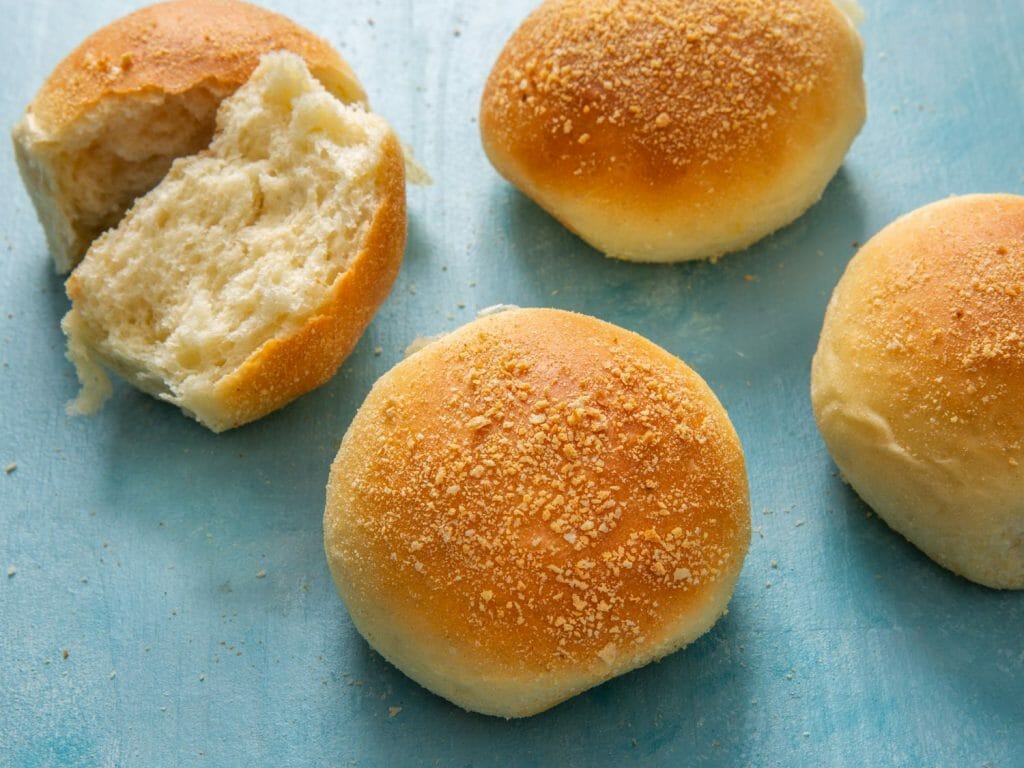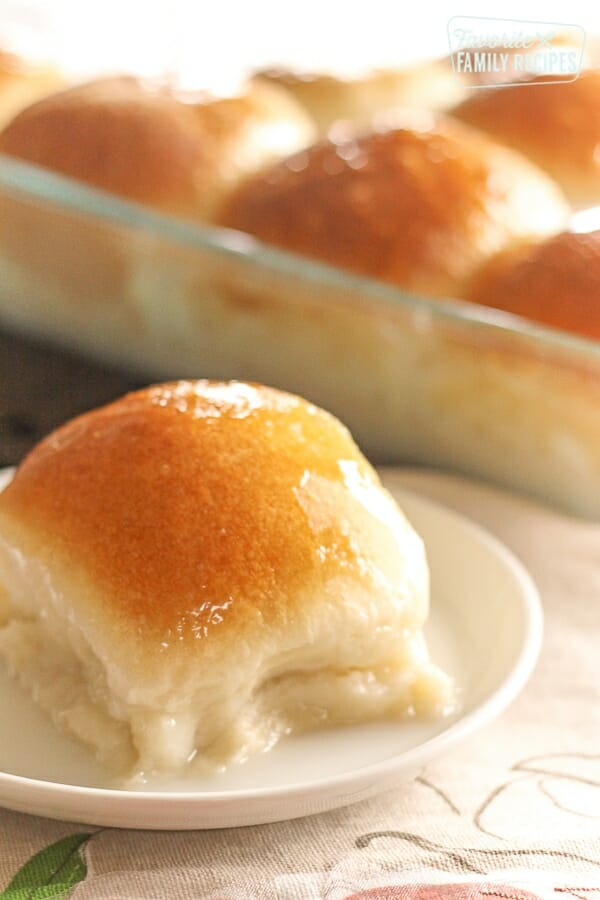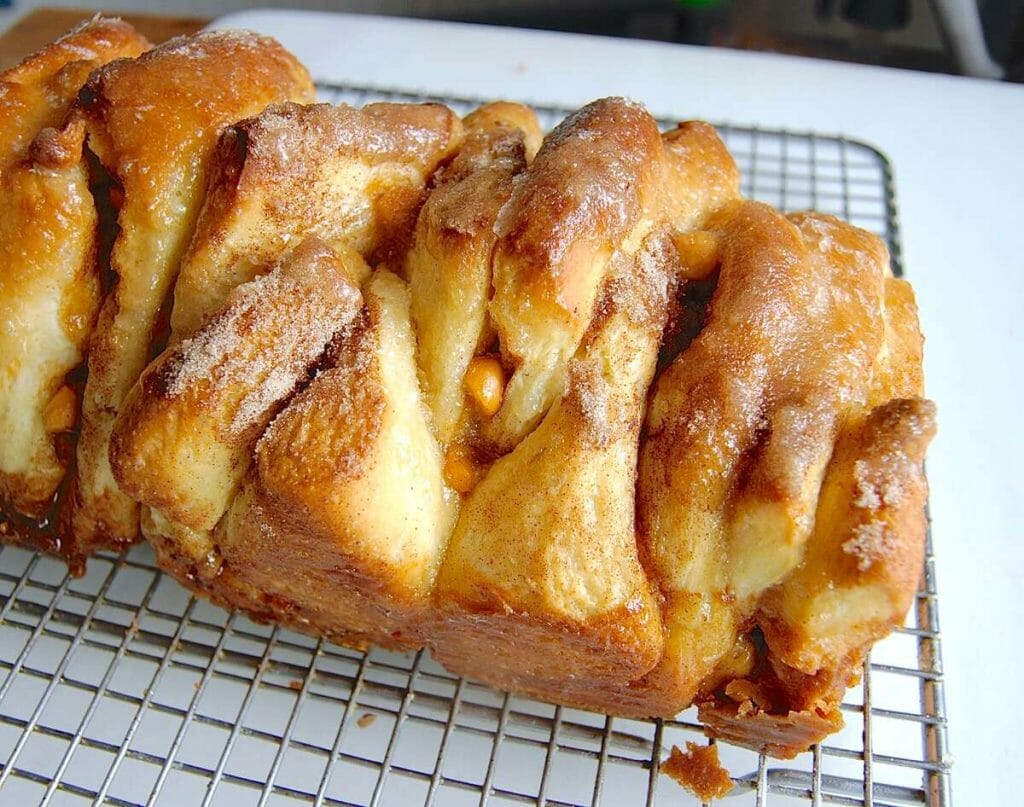My first attempt at making pandesal was a major disaster. The Filipino Bread Rolls were tasty but rivaled a blackhole in density. Because they were so hard, eating them felt like I was eating stones. Since then, I swore never to make pandesal in my entire life again. Up until last week, that is.
Pandesal is the quintessential Filipino bread roll. It comes from three Spanish words pan de sal which literally translate to bread of salt or salt bread in English. No surprise there because the Philippines was a colony of Spain for 333 years.
Filipino panaderias (bakeries) always boast that their recipe is the best. My apartment back in Manila was a stone’s throw away from a bakery and I could smell the aroma of freshly baked pandesal at 4 or 5am everyday. Pandesal is always the first order of business in any bakery in the Philippines and no self-respecting panadero (that’s baker in Filipino) would dare remove it from the list of goodies to sell at the bakery. By mid-morning, you’d be hard-pressed to find pandesal as they sell out like hotcakes.
While I enjoy pandesal as much as the next Filipino, I do have one gripe with it. The normal pandesal that you get from bakeries tastes like cardboard, bland and coarse. I guess it has something to do with the rising costs of ingredients and the drive to turn a profit.
But is it possible for a home baker to reclaim the sought after characteristics of pandesal? Is it too much to hope for soft, finely textured, and mouthwatering rolls? I set to find out.
An important component of bread baking is yeast. I talked a bit about yeast in this post on Chocolate Babka. Anyway, I noticed that most Filipino recipes don’t specify what kind of yeast to use. But based on experience, the most common yeast available in the country is the active dry yeast.
This kind of yeast needs to be activated in lukewarm, sweetened liquid (not hot as that will kill off the yeast) for 5-10 minutes before adding it to the dry ingredients. However, in case you have a packet of rapid rise or instant yeast, do note that this may be added directly to the dry ingredients.
There are also recipes that use bread flour. For my own version, I stuck with regular, all purpose flour. Bread flour contains more protein than all purpose flour and this helps develop gluten. More gluten equals chewier, denser bread.
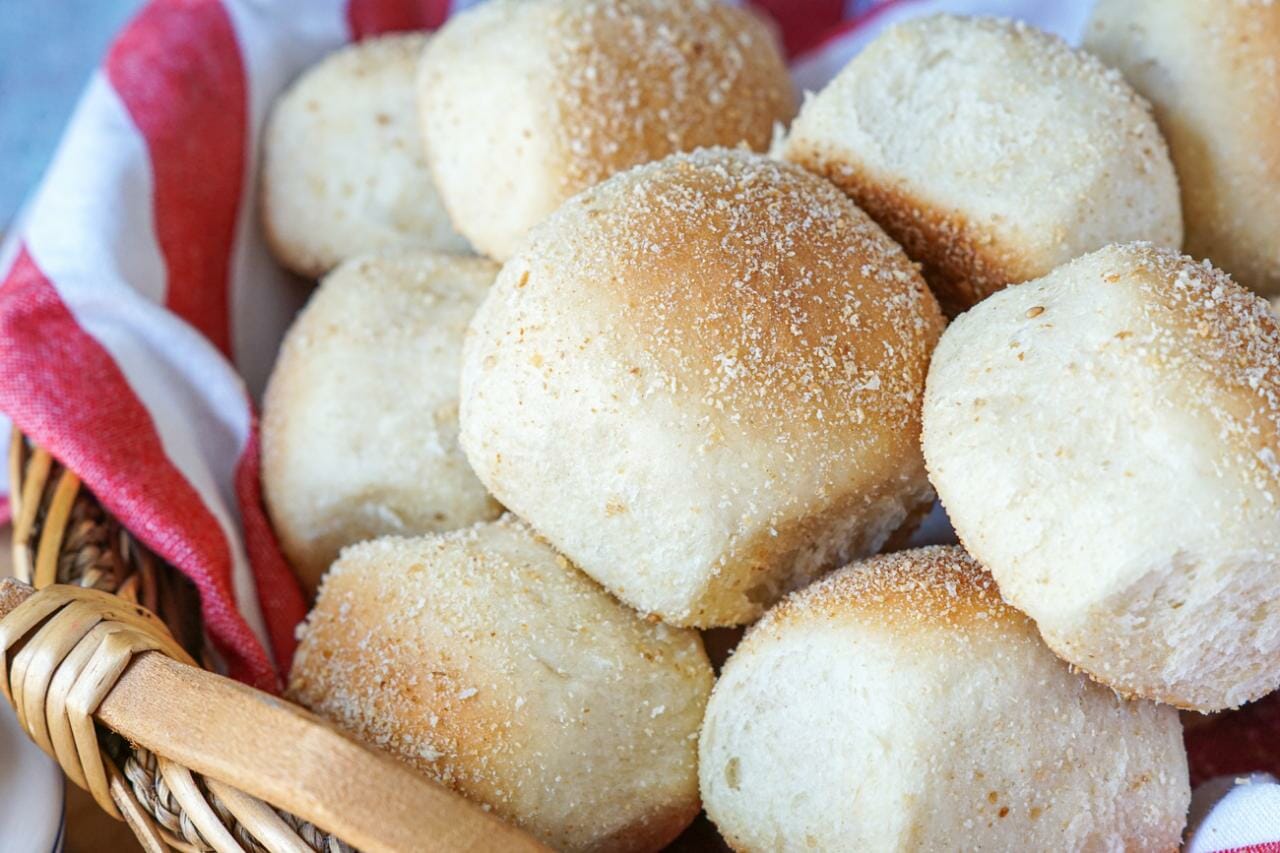
While some types of yeasted bread would benefit from a chewier texture, I prefer my pandesal to be on the soft side. Hence, the all purpose flour (4 cups of it) used in this recipe. Oh by the way, I use a kitchen scale to measure my ingredients for consistency. Check out the common ingredients and their corresponding weight measurements here. If you don’t have a kitchen scale, make sure to measure the ingredients correctly (i.e. spoon and level or dip and level).
After mixing the wet and dry ingredients, you’ll get a wet and sticky dough. Don’t be tempted to add more flour though. That was my big mistake the first time I baked pandesal. I added too much flour (and not by tablespoons either) because I thought that the dough was too wet to knead. Just sprinkle a tablespoon or two during kneading or make sure that your hands are oiled before handling the dough.
Surprisingly, whipping up your own batch of pandesal is easy. Aside from dealing with the stickiness of the dough, the only other activity that was remotely hard was waiting for the dough to rise.
I think what stops some people from trying their hand at bread making is the kneading process. I admit, it also stopped me from trying to bake bread for a long time. Kneading is crucial in turning that dough to the best bread you can have. Kneading can also turn that dough into a lump dense enough to be used as paperweight.
I use my stand mixer to knead the dough for a few minutes. Once I feel that the dough is smooth enough and comes together easily, I turn out the dough onto a silicone baking sheet. I knead the dough by hand for a few minutes until it is quite elastic. I then pinch a part of the dough and stretch it between my thumb and forefinger. If it stretches easily without breaking and is already a wee bit translucent, it means that I have already kneaded the dough enough.
If at first you don’t succeed, there’s always a second time (or a third time or an nth time). I’m sure your taste testers will be more than happy to sample your “failures”.
Ready to give it a go?
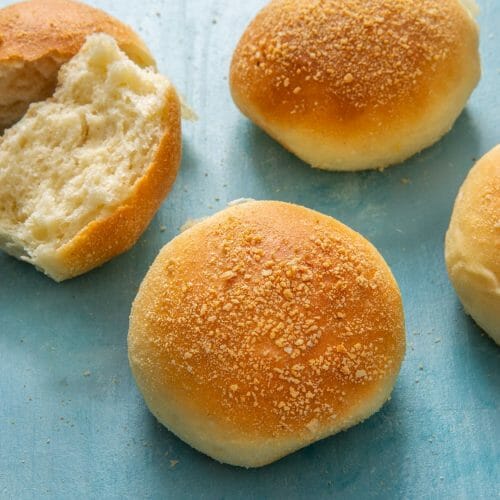
Filipino Bread Rolls
Ingredients
- 240 ml milk
- 2 eggs large
- 480 grams 4 cups all purpose flour
- 83 grams 3/8 cup sugar
- 35 grams 1/4 cup milk powder, optional
- 1 teaspoon salt
- 2 1/4 teaspoons instant yeast
- 57 grams 1/4 cup unsalted butter, softened
Instructions
- Combine milk and eggs in a bowl.
- Mix in flour, sugar, milk powder, salt, and yeast. After kneading for a few minutes, just enough for the dough to come together, add the butter in batches.
- Knead until dough is soft and elastic (until windowpane stage). Form into a ball and transfer to an oiled bowl and cover with plastic wrap. Let it rest for 1-2 hours or until the dough has doubled in size.
- Transfer the dough onto a well floured surface. Punch down the dough to slightly deflate.
- Forming the pandesal: There are 2 ways to shape the pandesal:
- Method 1:Roll the dough to form a rectangle. Starting from the long side nearest you, roll into a log and pinch ends to seal. Cut into 24 pieces, slicing diagonally. Roll each piece in bread crumbs and place onto a baking sheet with the cut side up.
Method 2:
- Divide the dough into 24 equal pieces. Shape each piece into a ball and roll it in bread crumbs. Place each ball onto a baking sheet.
- Cover the pandesal and rest for 1 hour or until the pandesal doubles in size.
Video
Notes
Filipino Bread Rolls Recipe

If you’re looking for a delicious and authentic bread roll recipe, you’ve come to the right place. We’ve compiled some of the best ones, as well as their preparation and storage. Let’s get started. First, let’s talk about the classic pandesal. This soft, slightly sweet bread is traditionally served as a sandwich with a filling of your choice. While it may be considered the most popular bread in the Philippines, you can enjoy it alone or with coconut jam, dunked in coffee, or with any filling you’d like.
Recipe
If you are looking for a quick and easy to make breakfast that will fill you up, then try making the famous Filipino bread rolls. These rolls are delicious and extremely easy to make – the hardest part is waiting for the dough to proof! Pandesal is a popular Filipino breakfast option, but you can find this snack at any time of the day! Whether for lunch or merienda, a Filipino household will always reach for pandesal!
There are a few important steps you should follow when making pandesal. First, you need to dissolve the yeast in 1/4 cup warm water. Next, add the butter, sugar, and eggs. Stir well. After a few minutes, add the flour. Stir in the remaining sugar. After about half of the flour is added, knead the dough again until it has the right consistency. Finally, cover and let the dough rise until doubled in size.
Method

If you’ve ever visited the Philippines, you’ve probably tasted Filipino bread rolls, also known as pandesal. These soft, fluffy buns have a delicious, slightly sweet taste, and are best eaten plain or stuffed with any filling of your choice. They’re also great as a snack or breakfast item. Read on for the recipe! Below are some tips on making delicious pandesal! We hope you enjoy!
First, you need to make the dough. The dough should be soft and elastic. When tested, it should spring back into shape. This is how you can tell it’s ready. The dough is delicious either by itself or with filling. It can be eaten warm or cold and goes well with hot beverages. You can easily make pandesal at home by following this recipe. For starters, you need to mix yeast with 1/4 cup of warm water, then add sugar, butter, and eggs to the milk mixture. Next, add 2 cups of flour, and mix well.
Storage
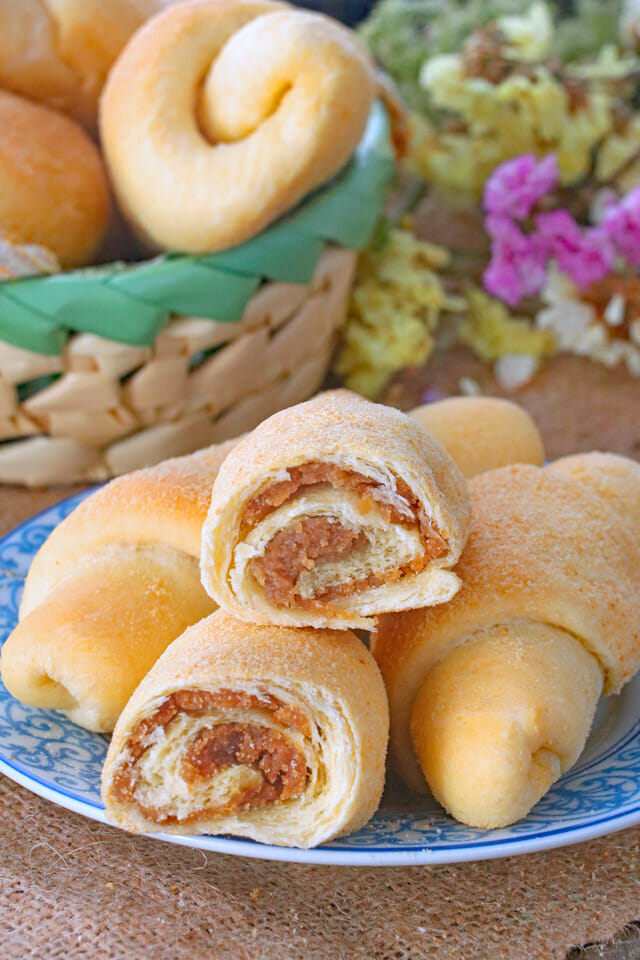
The best way to store your homemade Filipino bread rolls is in a ziplock bag. Once you have shaped and cooled them, simply transfer them to the bag and freeze them for up to 4 weeks. If you are freezing your rolls, be sure to use active dry yeast for longer rising times, and double the amount of yeast for long-term storage. Some of the yeast will die after freezing, so you’ll want to increase the amount of yeast used.
Unlike Spanish bread, which requires refrigeration, Filipino bread rolls can be kept on the counter for two days or frozen for up to a week. To reheat them, just microwave them for 15-20 seconds and eat! For longer-lasting bread rolls, store them in an airtight container. For convenient reheating, you can also freeze them for up to 1 month. Once they’ve been frozen, simply thaw them in the microwave or toaster oven before eating.
Fillings
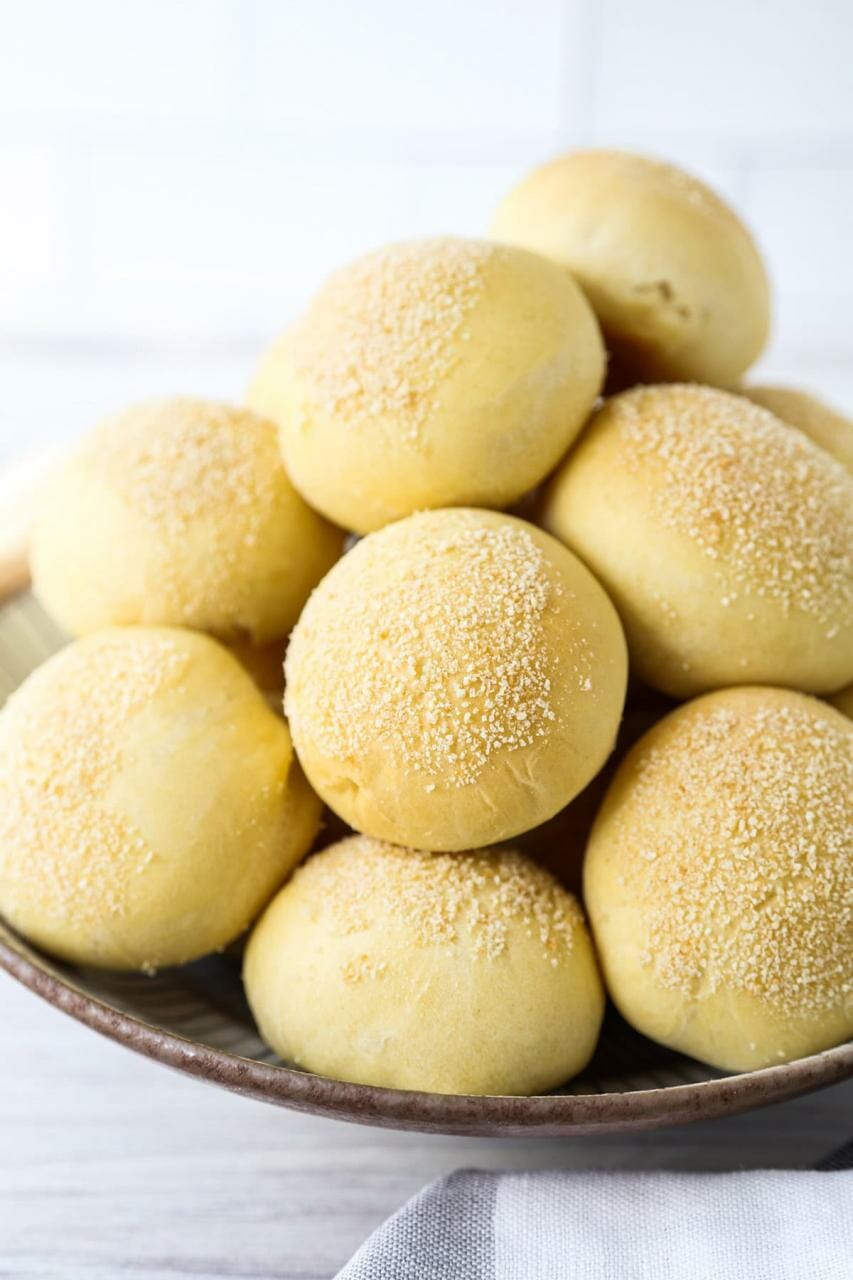
Filings for Filipino bread rolls can be as simple as cheese, butter, or any other filling. This soft, fluffy bread is traditionally baked for breakfast, but it is also commonly eaten throughout the day. Whether served plain or with a filling, pandesal is the perfect snack or breakfast food. This recipe for Filipino bread rolls combines butter, eggs, and sugar. It takes two cups of flour and a half cup of warm water to make a soft, elastic dough.
For a savory breakfast, try Pandesal with ham and cheese. This bread is good plain, but it is also delicious with other spreads, butter, or dunked in coffee. Another filling option is Matamis na bao (coconut jam). Before starting your pandesal recipe, be sure to activate the yeast in lukewarm milk. Make sure that the temperature is between 105 and 115 degrees Fahrenheit because yeast will not survive in colder temperatures.

